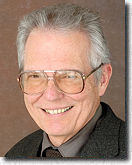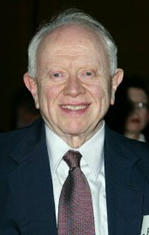First off, know that drug dealers not only have no scruples about breaking the laws of society, they also frequently have no qualms about cheating their customers. Sad to say, there is no quality control when it comes to dealers and illegal substances.
Caveat emptor.
Second, in the old days, if an agent got burned by buying a powder or tablet which turned out not to be a controlled substance, then the agent either got the money back from the dealer, or he made up the lost cash out of his own pocket. (NOTE: In more recent decades, the law was amended to make any distribution of counterfeit substances an illegal act under statutes governing the attempt to distribute a controlled substance or under the appropriate conspiracy laws. But, back then you had to get your money back.)
Third, there once existed an unofficial group known as the Gronk Squad, lads who were usually first through the door on any armed felon arrest. They also acted as backup when it came to making up a burn.
Fourth, we'll call the dealer Larry. It's not his real name, but Larry won't mind.
So here's the tale. A young cop fresh to the fed task force had bought what he thought was coke, but the lab report came back procaine, not a controlled substance. Time to repossess the money.
Late that morning, the young cop and his also young partner drove over to Larry's house. The Gronk Squad set up mobile surveillance on the outside. Young Cop went in alone and was back out in under ten minutes. He got into his car and drove around the block to update us. Seemed Larry was still in bed, wasn't inclined to reimburse the cash and maybe What's His Name should come back some other time.
My partner, a 15 year veteran of the streets, took this response as a brushoff, so he decided to go in the house himself with Young Cop. I had a fair idea what would happen next. Sure enough, two minutes later and out comes Larry, hopping on one bare foot while trying to get his jeans on. Larry gets in the back seat of the two-door undercover car, then he, Young Cop and my partner drive over to the residence of Larry's source of supply. Jake, me and Young Cop's partner follow in my blue Cadillac. We set up surveillance from a location atop a hill where we can see everything.
Larry, Young Cop and my partner soon return to the U/C car from the source's residence. Apparently, the source isn't home. Larry gets in the back seat again. Now, a car of young males shows up and parks behind the U/C car. The driver's window comes down and a long black tube slides out. Looks like they brought a shotgun to the curbside gathering. Larry's friends, who had been left back at his house when Larry got dressed in the front yard, have evidently decided to ride to Larry's rescue. The driver, holding the shotgun, tries to encourage Larry to get out of the car he's in and then get into their vehicle. Larry's not sure he should do that, so he wisely stays where he is. You could aptly call this a Mexican standoff, except only one side has displayed weapons up to this point.
To better balance the scales, those of us on the hill invite ourselves to the
baile (that's Spanish for dance). The blue Cadillac rushes down off the hill and sandwiches the vehicle containing Larry's friends. Perhaps feeling a bit cramped in their options, the Friends of Larry abandon Larry to his fate as they depart the scene in great haste. The Cadillac gives chase. No lights, no siren. We don't have the money back yet.
After a few blocks and turns, the Friends of Larry stop their vehicle. I stop the blue Cadillac about sixty feet back. Their driver gets out with his shotgun pointed in our direction. Their front passenger gets out with a pistol. Not to be outdone, I crouch behind my driver's door, automatic in hand in my best Broderick Crawford style. Jake does the same behind our front passenger door. My veteran partner and Young Cop with Larry in their back seat pull up behind us. The tableau becomes a slice of very long Time.
Unfortunately, we are all parked beside a bank on the corner.
The security guard, an off-duty cop working his second job to make ends meet, has been quietly sipping his hot coffee up until now. It's just another slow day for him. He glances out the side window at what has been a nice morning. Startled at seeing all the men brandishing weapons in the street, he spills coffee on himself as he frantically punches the Panic Button. To him, it's obviously a bank robbery about to be in progress.
The tableau breaks when the Friends of Larry's driver declines to make a last stand on such a beautiful sunlit morning. he throws his shotgun into the back seat and prepares to drive off. A blur flashes by on my left side. It's Young Cop on a dead run towards the Friends of Larry. Guess Young Cop had some pent up feelings about how things were going, so he decided to take a more active hand.
Reaching through the open driver's window, Young Cop tries to grab the keys out of the ignition. Unnerved, the driver puts the transmission in gear and steps on the gas. Young Cop, supported by his elbow inside the window frame, is now going for a ride on the outside of the car. I'm not sure who turned the steering wheel, but the vehicle takes an abrupt right turn.
The bank, being on a corner, has its front door located on an angle at that corner of the building. A canopy comes out over the sidewalk from the door and there are large, low-growing evergreens positioned for landscape.
The Friends of Larry's car passes under the canopy and between the front door and the outer canopy uprights. Young Cop realizes there isn't enough room for him to safely pass through, so he dives into the nearest large evergreen. All I see is a pair of brown Dingo boots sticking out. The Friends of Larry disappear down the street at a high rate of speed. I recover Young Cop into my car and we ride off into the horizon.
Seems Larry has seen enough and no longer wishes to participate in further actions. At Larry's request, my partner takes him to Larry's own bank where Larry withdraws sufficient funds to repay the buy money. Larry is then dismissed with an admonition about selling bad drugs. He promises to do better in the future.
We never broke cover. (Didn't burn the informant for other cases, plus who knows, maybe Larry would sell good stuff to us the next time. Dumber things have happened.)
Local police respond to the bank alarm, but the street is deserted.
I still have the newspaper article with the headline: Bank Robbery Thwarted.
Those were exciting days. Fortunately, wiser heads soon prevailed and laws and policies were changed for the better.
PS~ I tell these tales of the street as factually as I remember, just as though we were all a bunch of cops sitting in a bar, swapping stories for laughs and learning from each other, a matter of survival on the street. However, if you as a writer get your muse jogged by anything you think would make a character, a scene, an action from any of these previous or future tales, then feel free to use it for yourself. One way or another, we're all in this together.




 Today is the day we honor our fighting men and women, our veterans and mostly it's a day to remember and honor those who lost their lives fighting for our country and our freedom. Yet we also honor those who are still fighting. And in all fairness those who are home but are wounded physically, emotionally and spiritually. Memorial day is for remembrance.
Today is the day we honor our fighting men and women, our veterans and mostly it's a day to remember and honor those who lost their lives fighting for our country and our freedom. Yet we also honor those who are still fighting. And in all fairness those who are home but are wounded physically, emotionally and spiritually. Memorial day is for remembrance. 






















.gif)







